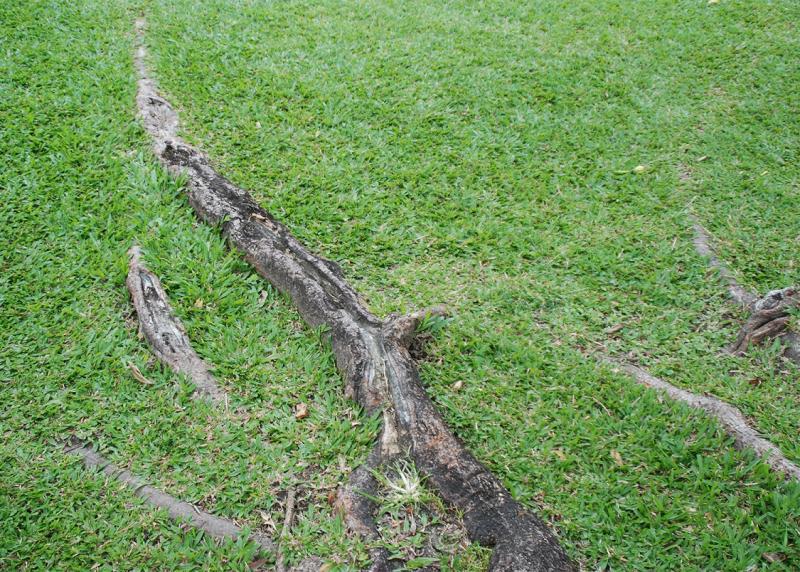Roots erupting through the soil surface that extend beyond a tree trunk are known as surface roots. This is a normal part of aging for shallow-rooted trees.
The aging roots increase in circumference just like the tree’s branches and trunk. As they thicken, the upper portion of the roots appears above the soil surface.
These irritate gardeners when trying to grow and mow the grass under the tree. It is important not to bury, cut, dig up or shave off these vital roots. Covering or damaging the roots creates entryways for insects and diseases to enter and may damage or even kill the tree.
Mulch is a simple solution. Use a 2- to 3-inch layer on the soil surrounding the tree. Pull the mulch away from the tree trunk to avoid insect, disease and rodent problems. Create a mulch ring as large as possible. This eliminates the need to hand trim grass near the tree and makes mowing easier. Mulch is also better for the tree than grass growing up to the trunk. The grass is a big competitor for water and nutrients, and can stunt the tree’s growth.
Reduce ongoing maintenance with the help of newspaper or cardboard. Start by edging the bed to disconnect the grass and weeds under the tree from the surrounding plants that can serve as their life support.
Then cut the grass and weeds as short as possible, being careful not to harm the surface roots. Cover the area to be mulched with newspaper or cardboard. This creates a temporary but extra layer of mulch that helps kill the grass. The paper will eventually break down and improve the soil below. Cover this with a 2- to 3-inch layer of shredded bark or wood chips for years of weed control.
Consider shade-tolerant perennials and groundcovers if mulched beds do not fit your design style. These plants will add seasonal interest and eliminate the need to mow over surface roots, and they do not compete with the trees like lawn grass. Barrenwort, Canadian ginger, hostas, variegated Solomon seal, coral bells, foam flower, Bergenia, and Siberian bugloss are a few to consider. Make sure the plants you select are suited to your growing conditions and your garden design.
Use caution when planting under mature trees. Avoid deep tilling that can damage not only the surface roots but also the fine feeder roots that absorb water and nutrients. Instead, dig relatively small holes between major roots and allow the plants to fill in the area.
Mulch the soil surface with leaves, evergreen needles or other organic mulch that will conserve moisture and improve the soil as they decompose. Water thoroughly once plants are in the ground and often enough to keep the roots slightly moist throughout the summer.
Add a splash of color with a few potted annuals by setting them among the perennial groundcovers. This allows you to vary the plantings as the seasons change. You can also permanently sink a few nursery pots in the ground, then plant flowers in a slightly smaller container and set that pot in the buried one. This method is less disruptive to the tree roots and easier on your back.




















































